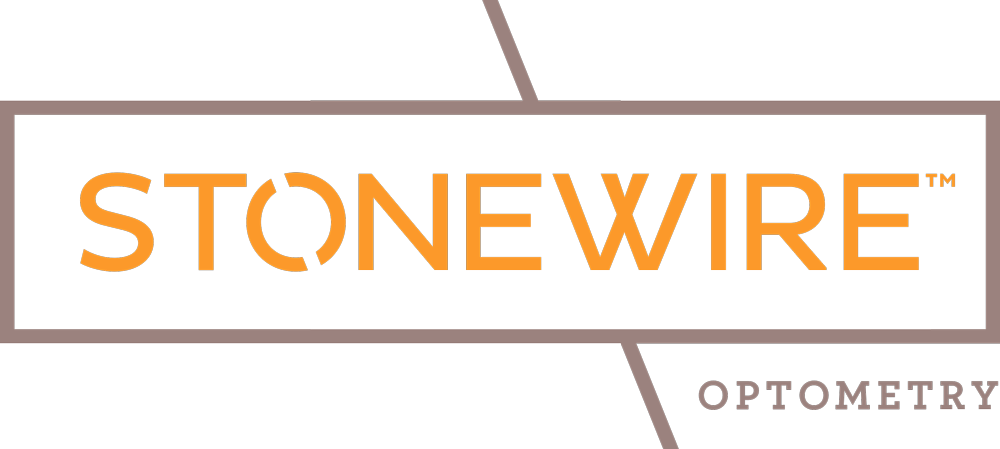Seeing Clearly: How to Fix Refractive Errors Like Myopia & Astigmatism
/Have you ever noticed yourself squinting to read a text, struggling to see road signs clearly, or dealing with frequent headaches after long hours on a screen? You're not alone. Refractive errors are the most common cause of blurry vision, affecting millions of people. The good news? They're easily diagnosed and corrected. At Stonewire Optometry, we help patients take control of their vision with personalized solutions. Understanding and managing refractive errors can bring a sense of relief and control. Read on to learn about the different types of refractive errors, their symptoms, and the best ways to achieve clear, comfortable vision.
Common Types of Refractive Errors
Myopia (Nearsightedness)
Myopia makes distant objects appear blurry while near objects remain clear. It usually develops in childhood or adolescence and occurs when the eye is too long or the cornea is too curved, causing light to focus in front of the retina instead of directly on it. People with myopia may struggle to see road signs, the classroom board, or television screens clearly.
Hyperopia (Farsightedness)
Hyperopia can make near objects blurry or require extra effort to focus clearly. It happens when the eye is too short or the cornea is too flat, causing light to focus behind the retina instead of on it. This can make tasks like reading, using a phone, or working on a computer more difficult.
Astigmatism
Astigmatism causes blurred or distorted vision at all distances due to an irregularly shaped cornea or lens. Light entering the eye is scattered instead of focusing evenly, leading to visual distortions. Astigmatism often occurs alongside myopia or hyperopia, requiring specialized lenses to correct vision.
Presbyopia
Presbyopia is an age-related refractive error that makes it difficult to focus on close objects. Unlike other refractive errors that begin in childhood, presbyopia develops in adults over 40 as the lens loses its flexibility. This can make reading small print or using a phone more challenging, leading many people to need reading glasses or progressive lenses.
Symptoms of Refractive Errors
While blurred vision is the most obvious symptom, refractive errors can also cause:
Double vision – The brain perceives two overlapping images when the eyes struggle to focus.
Hazy vision – Light isn't properly focused, leading to overall blurriness.
Halos around lights – A common sign of astigmatism.
Frequent squinting – The eyes strain to improve focus.
Headaches – Caused by prolonged eye strain.
Tired or sore eyes – Common after reading or screen use.
Difficulty focusing on close tasks – Especially with hyperopia, astigmatism, or presbyopia.
What Causes Refractive Errors?
Several factors contribute to refractive errors, including:
Eyeball length – An eye that is too long or too short affects how light is focused.
Corneal shape – An irregular or curved cornea alters how light enters the eye.
Lens changes with age – The lens stiffens over time, making focusing more difficult.
A family history of refractive errors also increases the likelihood of needing vision correction.
Treatment Options for Refractive Errors
At Stonewire Optometry, we offer several options to correct refractive errors:
Eyeglasses
Eyeglasses are a simple and effective solution to correct vision by adjusting how light enters the eye. They provide instant clarity and are available in single-vision, bifocals, and progressive lenses.
Contact Lenses
Contact lenses offer a flexible and natural vision correction alternative to eyeglasses. Available in daily, bi-weekly, and monthly options, they are tailored to your specific prescription and lifestyle needs.
Laser Eye Surgery
Procedures like LASIK, PRK and SMILE reshape the cornea to correct your refractive error. Your optometrist can determine if you're a good candidate and guide you through the process. But note, that these procedures are not permanent and you may need eyeglasses again.
Myopia Control for Children
For children with progressive myopia, we offer specialized treatments such as atropine eye drops, myopia control contact lenses, and orthokeratology (overnight lenses) to help slow down prescription changes and protect long-term vision.
Book a Comprehensive Eye Exam in Edmonton
Refractive errors are easily managed with proper vision correction. At Stonewire Optometry, we understand that each person's vision is unique, and we provide personalized eye care solutions to help you see clearly and comfortably.
📅 It's as easy as a few clicks to schedule your eye exam today and take control of your vision!
Disclaimer: The content provided in this blog post by Stonewire Optometry eye care clinic in Edmonton’s Kingsway Mall, and is intended solely for informational purposes and does not replace professional medical advice, diagnosis, or treatment by a Licensed Optometrist. No doctor/patient relationship is established through the use of this blog. The information and resources presented are not meant to endorse or recommend any particular medical treatment or guarantee and outcome. Readers must consult with their own healthcare provider regarding their health concerns. Stonewire Optometry and its optometrists do not assume any liability for the information contained herein nor for any errors or omissions. Use of the blog's content is at the user's own risk, and users are encouraged to make informed decisions about their health care based on consultations with qualified professionals.





